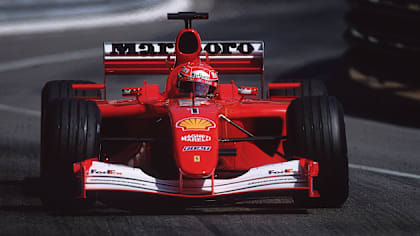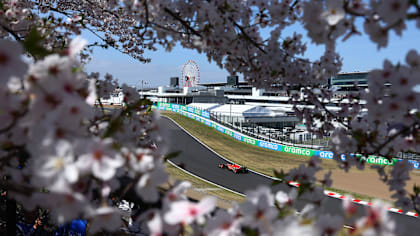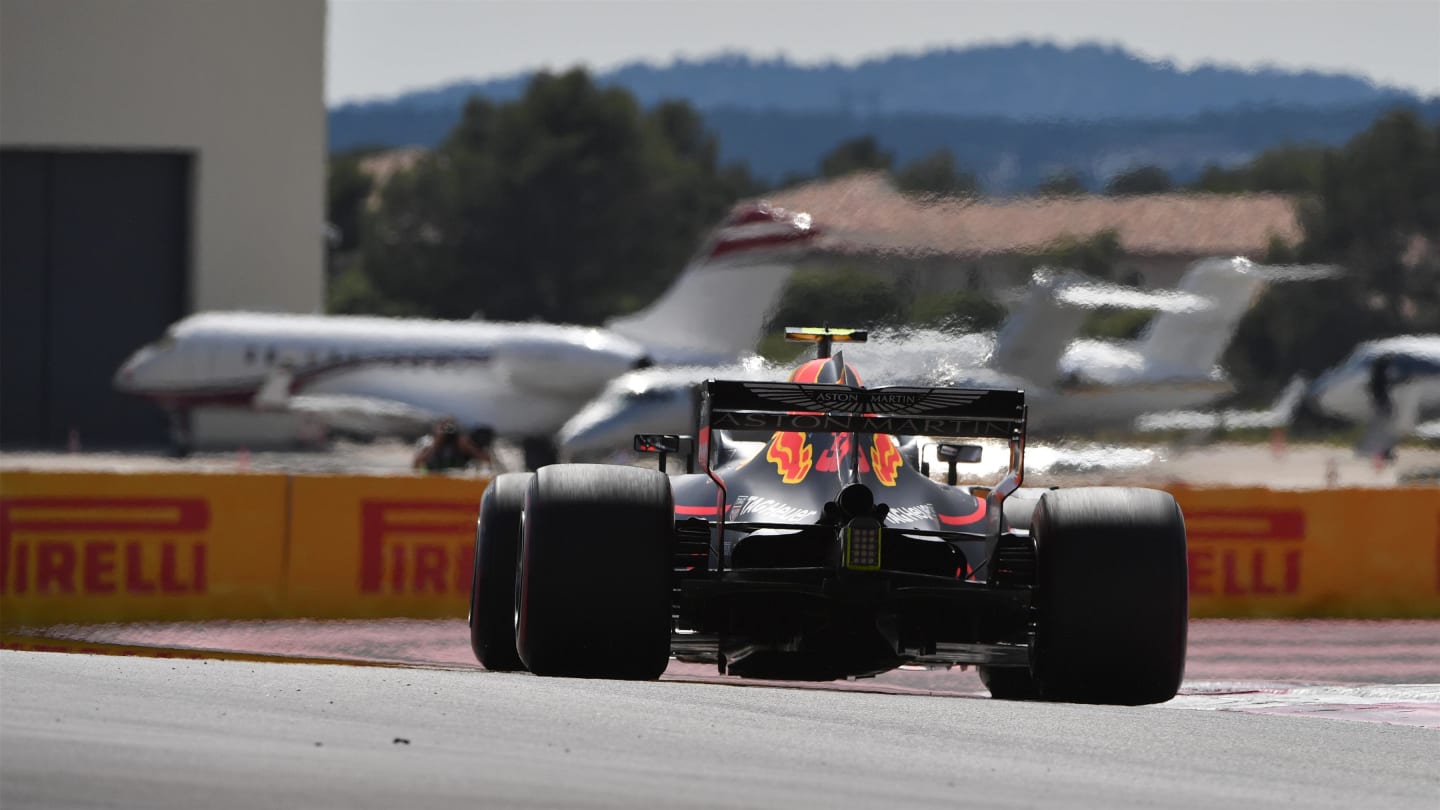
Technical
TECH TUESDAY: Why Paul Ricard provides the ultimate test for an F1 car

Share

The Circuit Paul Ricard, which hosts this weekend’s French Grand Prix, does not place an extreme demand on the cars in any one specific area. Rather, it demands a mix of excellence in every area in much the same way as Circuit de Barcelona-Catalunya.
The first sector, with its multiple tight turns, demands a lot of a car’s braking, agility and low speed balance and downforce, with sector two incorporating the Mistral Straight and the very fast Signes corner asking a lot of a car’s power and aero efficiency. Then it’s back to agility and direction change in sector three.
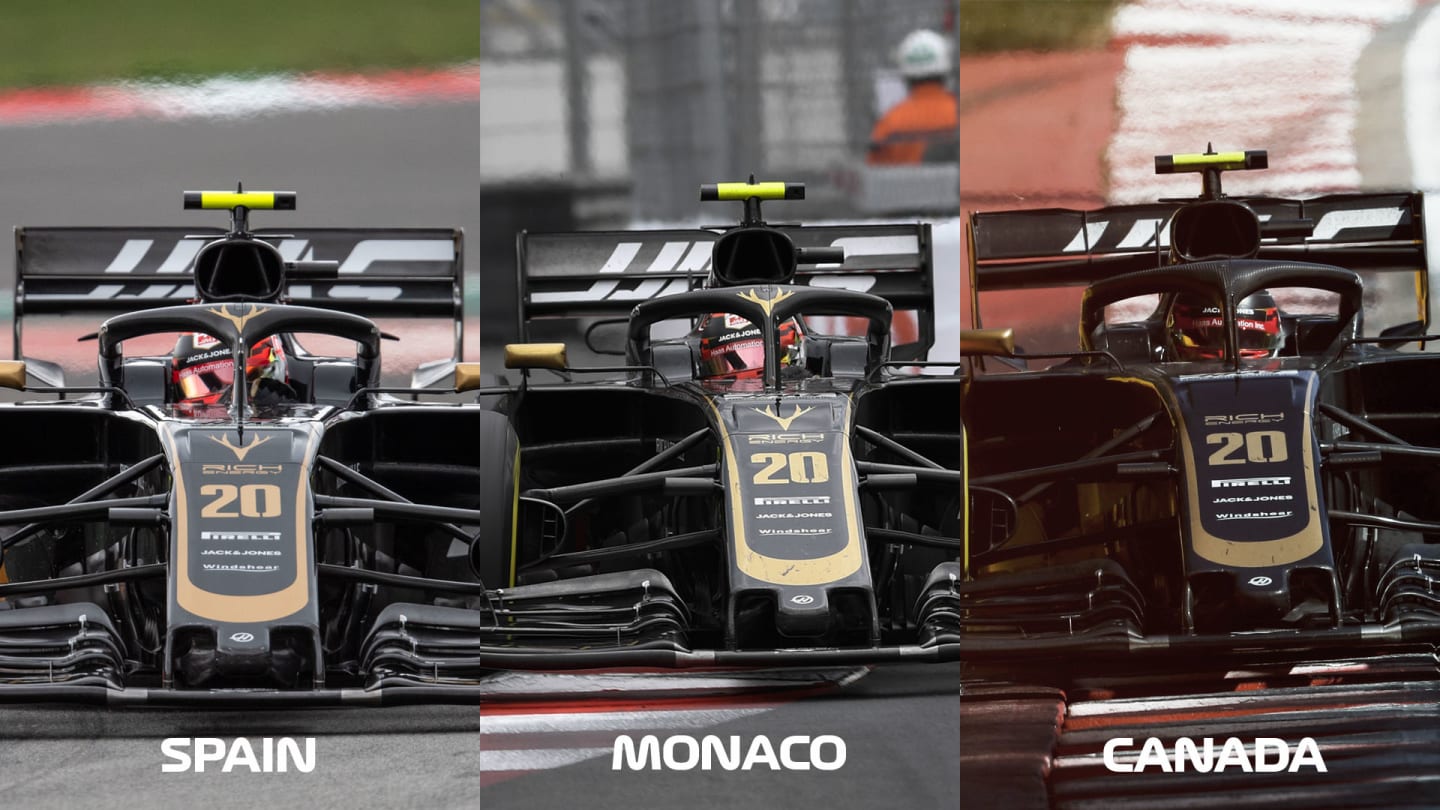
After the extremes of Monaco (high downforce) and Montreal (low downforce) we'll be back to Barcelona-style settings in Paul Ricard
In terms of braking, the biggest stop on the circuit is at Turn 8 (the chicane that punctuates the Mistral). Here, the cars approach at around 332kph (206mph) and brake down to 192km/h (119mph). They shed 140km/h (87mph) in just 1.51s, according to brake manufacturer Brembo.
Although the circuit isn’t particularly demanding of the brakes around the lap (unlike Montreal), that’s still a very big single braking demand. Lap time will still be shaved by finding the best compromise solution between braking power and brake cooling via the size of the aerodynamically disruptive ducts. Improving the cooling efficiency of the carbon fibre discs will allow you to minimise the duct size.
READ MORE: How the Mercedes W10 devours slow-speed corners
The latest disc by Carbon Industrie, as modelled on the Red Bull since Monaco (combined here with a Brembo caliper), shows how sophisticated this cooling has now become. As well as featuring over 1,200 cooling holes in the disc, they are arranged part diagonally and part inline, enhancing the swirl of the airflow through them, effectively inducing the air to pass through them faster and thereby increasing the cooling effect.
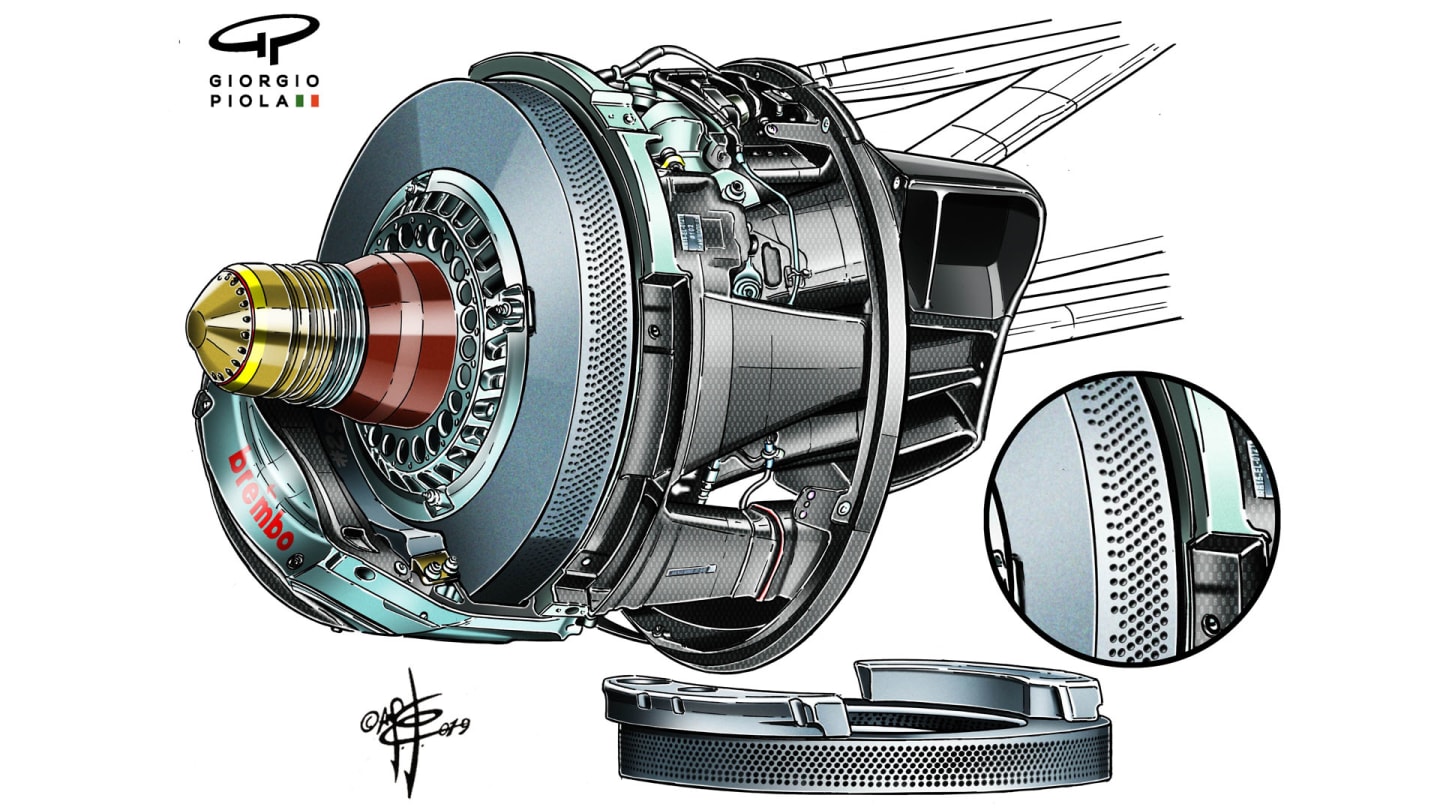
Note the distortion in the hole pattern on Red Bull's brake disc, designed to enhance cooling
In terms of aerodynamics, after the unusual high and low downforce set ups from Monaco and Montreal respectively, we'll be back to conventional rear wing levels here, similar to Barcelona. It will be interesting to monitor whether Red Bull will retain the ‘no-hole’ nose it used at Monaco and Montreal or whether the original ‘nose with hole’ returns. The latter will boost the airflow capacity to the underfloor, helping create more total downforce, but more specifically at the rear than the front. Around the slow corners of both Monaco and Montreal it was felt that front end downforce to give an adequate front-rear balance was more important than total downforce.
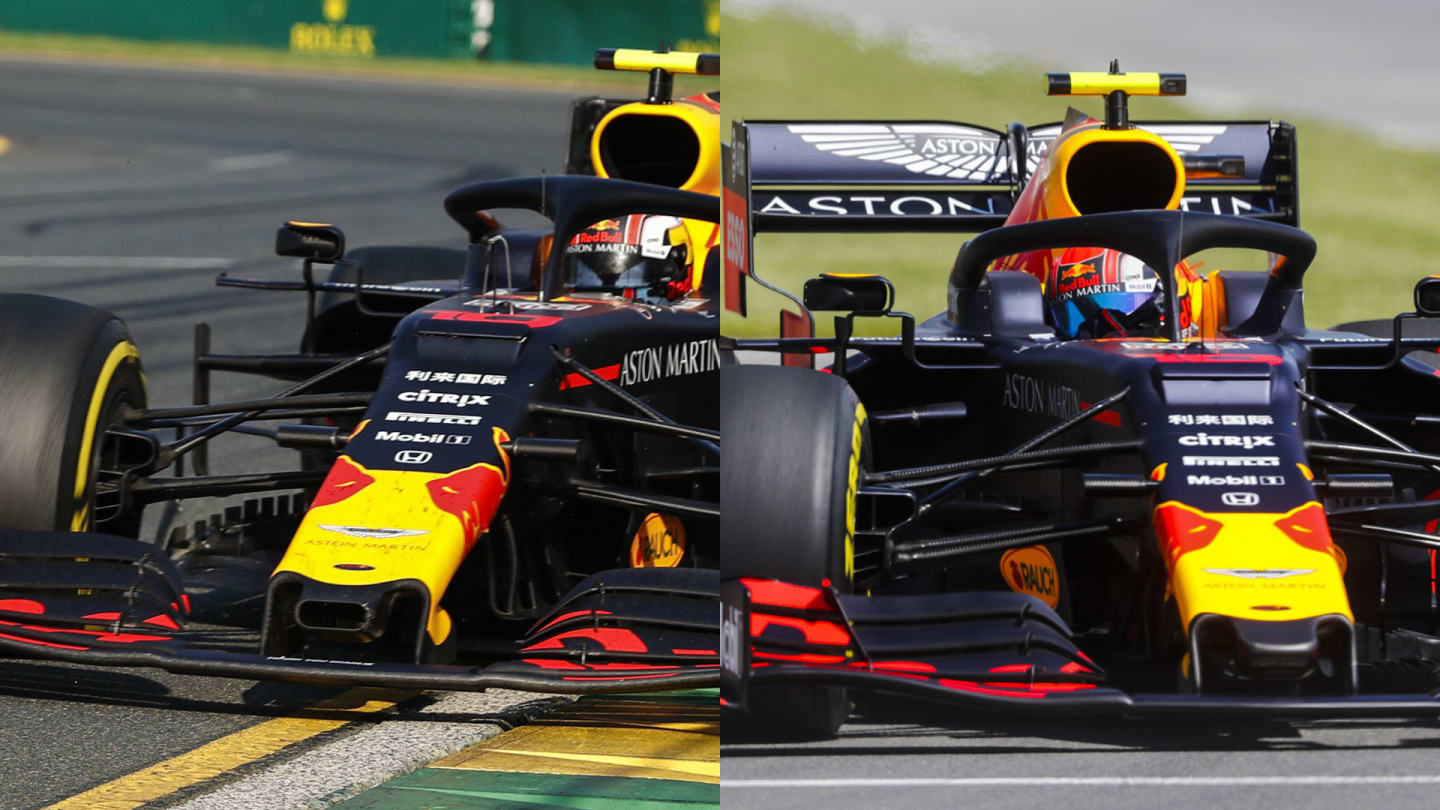
Will Red Bull run with the hole in their nose or not?
Similarly, the ears around the S duct exits of the Alfa and, at Montreal, the McLaren, which speed up the flow from the duct, may be deemed counter-productive on a track with a more conventional balance of faster corners and straights. Expect to see McLaren continue with the aerodynamically aggressive mirror mounts introduced in Montreal. The mounting pillar connecting the mirrors to the bargeboards has enabled the aero team to make accompanying changes that enhance the separation of the outwash airflow around the tyres from that down the body sides.
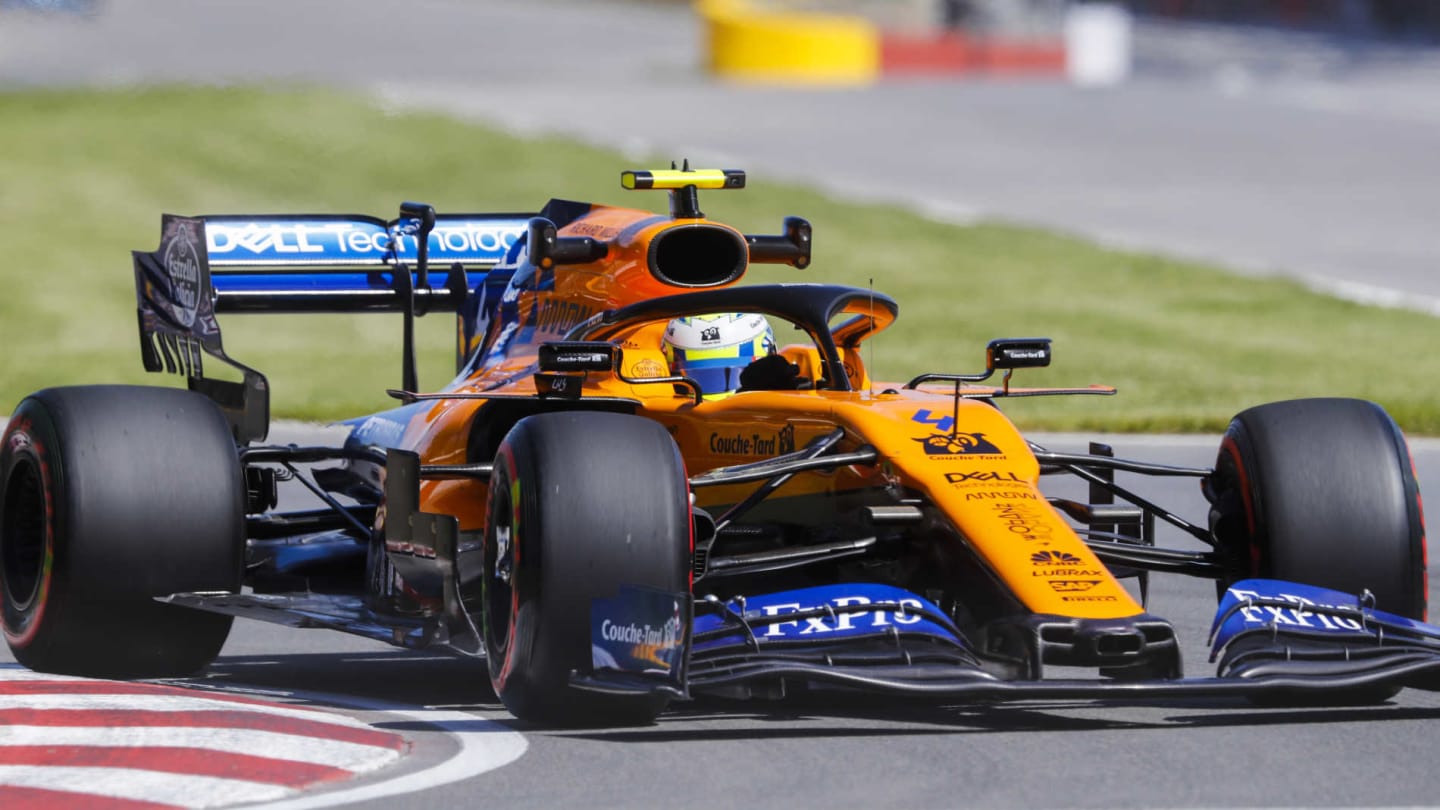
McLaren's mirrors are now mounted to the barge boards as well as the chassis
Paul Ricard is deemed moderately demanding of the tyres by Pirelli and the compound choice made here is the same as at Melbourne, China and Baku, harder than at Monaco and Montreal, softer than in Bahrain and Spain. Because of the re-alignment of the compounds since 2018, they are slightly harder than were brought here last year. However, because Paul Ricard was one of the few tracks at which the – now universal - thin gauge tyres were used in 2018, the effect won’t be magnified. The thinner gauge effectively makes the tyres harder in compound.
The tyre is essentially an energy store and as the contact patch is squeezed into the tiny gaps between the track surface granules, so the energy is stored and then deployed for either braking or cornering load. The further into the gaps the rubber can be pushed, the greater the store and therefore the available grip. This is partly why a soft compound is faster than a hard and also why more downforce equals more tyre grip. For this year the track has been resurfaced, and although it’s of a very similar roughness to previously, typically the release of substances from the asphalt itself can make a fresh surface relatively gripless – thereby even further enhancing the power of downforce.
YOU MIGHT ALSO LIKE
News Leclerc admits double disqualification ‘hurt’ Ferrari as Hamilton left ‘100% confident’ team can fix any problems
News Michael Schumacher’s Monaco Grand Prix and double title-winning Ferrari F2001 to be sold at auction
News What tyres will the teams and drivers have for the 2025 Japanese Grand Prix?
News What is the weather forecast for the 2025 Japanese Grand Prix?


